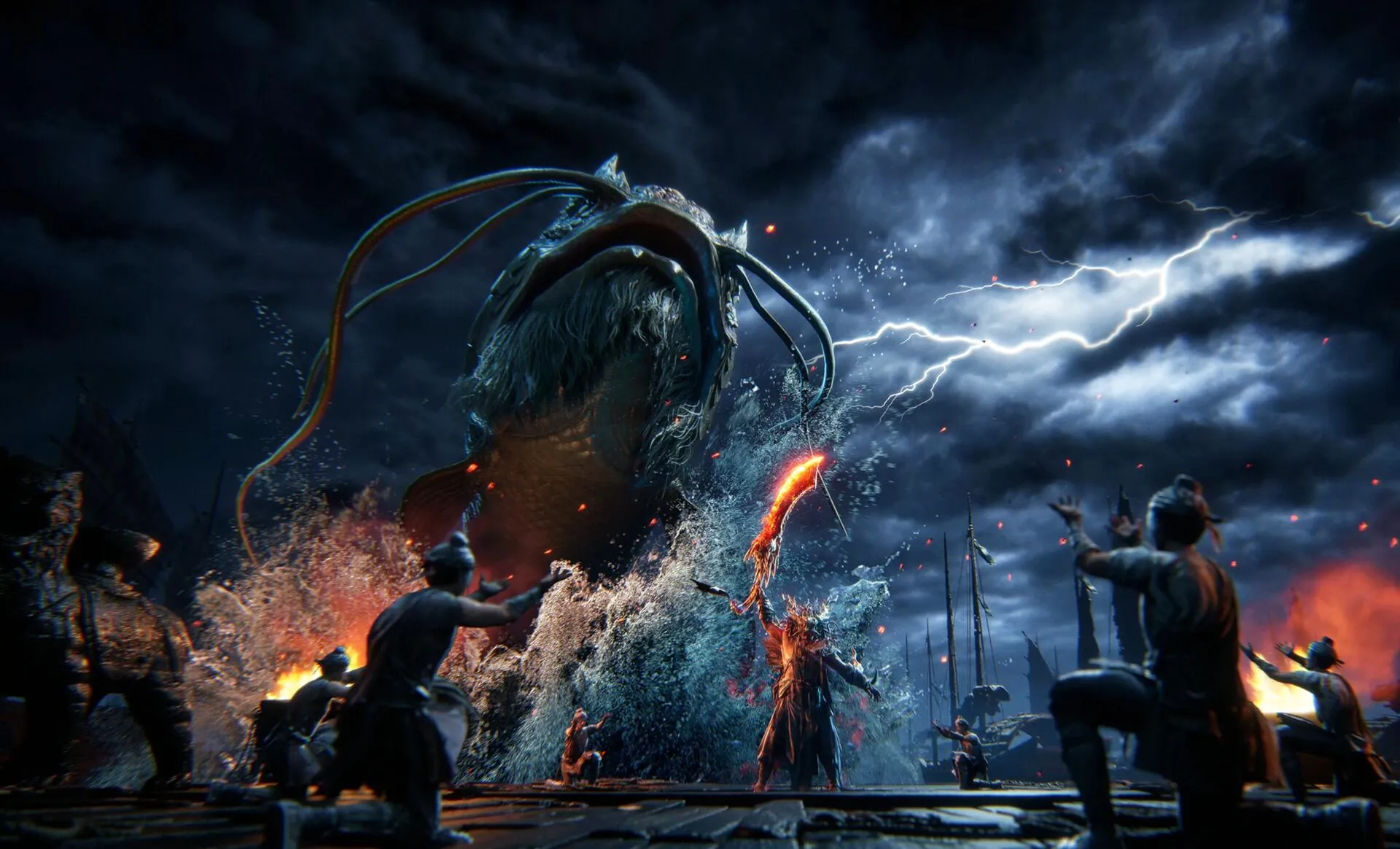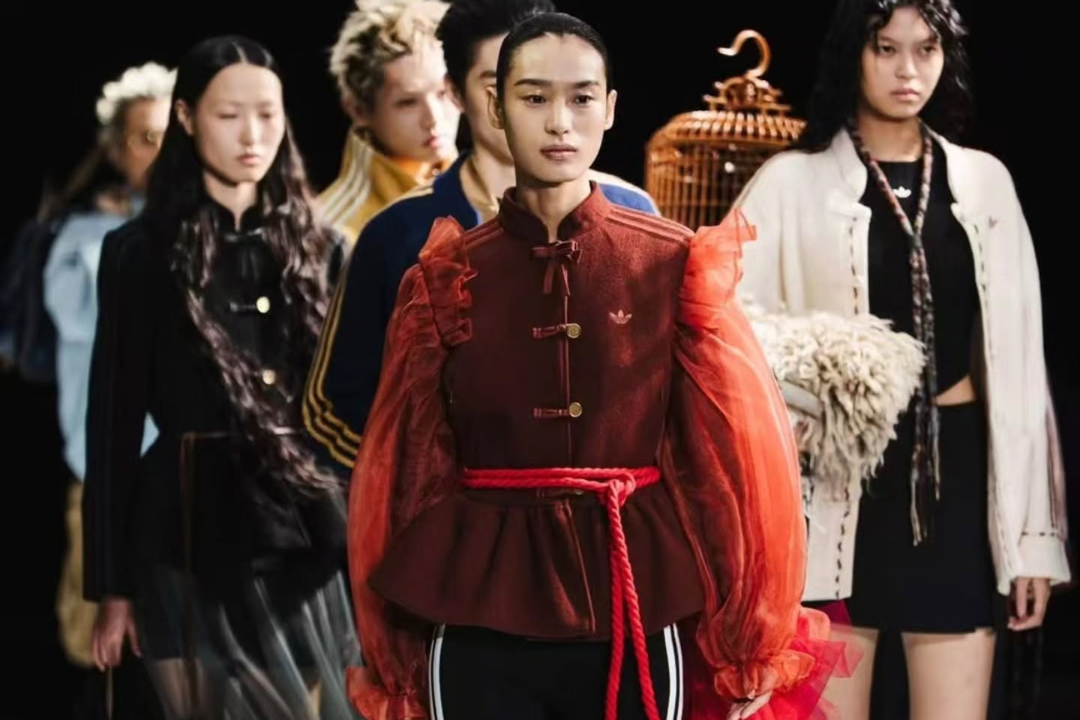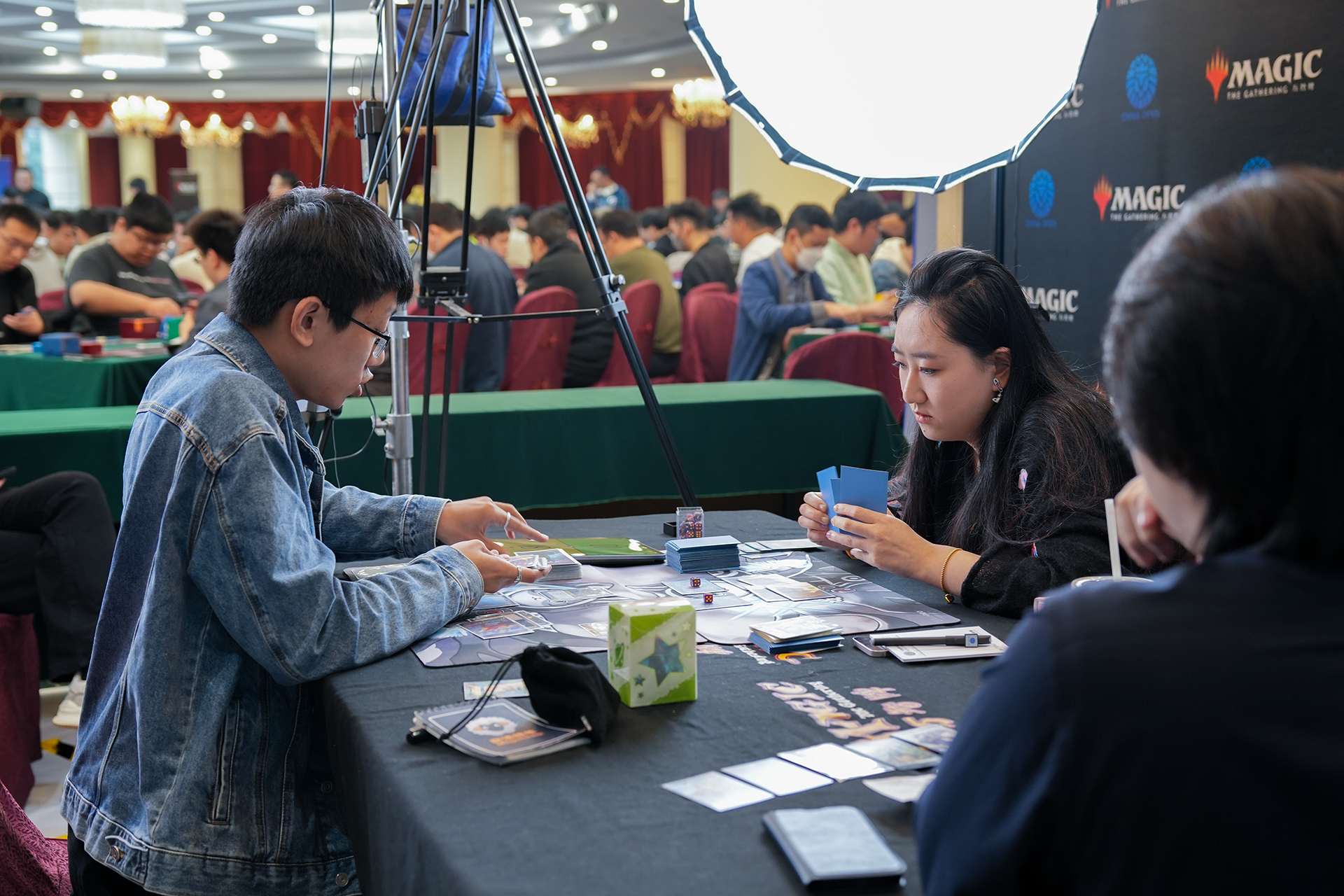“Thanks Leica, thanks to my homeland, thanks Mum and Dad,” was the entirety of Huang Jing’s 2011 Leica Oskar Barnack best newcomer award acceptance speech. This scene perfectly demonstrates the Shenzhen-based photographer’s enigmatic personality.
From the outside looking in, he is a seemingly simple, unassuming man of few words. Yet, prod further into his mind through his work and you quickly find out that behind Huang Jing’s gentle character is a complex thinker who is relentlessly contemplating the many connections between what is not seen, what is not said, what is not thought and what is. His photography is a direct representation of this mind-set and as he puts it, “with life’s many changes, my life’s equilibrium will be consistently thrown off balance. This induces a volatile state of mind that pushes me to contemplate many different questions. Naturally, my photography follows suit.”

Huang Jing’s photographic style perhaps could be described as street photography dancing with an abstract minimalist style to the tune of a surrealist beat. Yet, ostensibly, his work doesn’t attempt anything complex: simple “everyday” subjects, compositions and themes that even he bluntly concedes “are all old and clichéd”. It is not, however, what is in the picture where Huang Jing’s genius shines. It is the emotion created by what’s outside the frame that captivates.
This skill of taking the ordinary and bending and twisting it in ways that force the viewer to see it in a new light is down to the subtle presence of what he calls an ‘off screen narrative’. This narrative pulls the vigilant viewer further into the emotion of the frame, “just like an iceberg in the middle of the ocean hides away an enormous amount of content that the eye can’t see […] yet the existence of what is hidden can be faintly detected.” This sentiment is best summed-up using his own words, “the art is outside the frame”.
Excited by his unique method of photography, we caught up with Huang Jing to go further down the rabbit hole of his artistic mind and to learn more about the contemplations behind his work and what is outside the frame.

RADII: You once described your philosophy to photography as being lacking of a set theme, you just shoot what attracts you in passing. Can you talk a bit about what it is that attracts you to certain subject matter and not others?
Huang Jing: Currently, my attitude to photography is the same [as before], but as to what I now find captivating, as to what I’ll shoot, that is completely different. What it is that interests me is a question that I can’t answer in just a couple of sentences as it touches on every aspect of change within me – everyday life, the books I read, the films I watch, the questions I ponder, and so on. Specifically what interests me is difficult to express, but put simply, I’m influenced by what captures my interest at a specific point in time. For example, recently I’m interested in temperature and spirituality.
Saying that, there is thematic consistency with your interest in nature. Can you talk a bit about this connection to nature?
From when I was little, I spent my time split between big cities and small villages. Nature attracts me, yet at the same time terrifies me. It makes for a very seductive contradiction. Therefore, I always carry a feeling of insecurity as I constantly wander the borders of nature, scoping it out. Before I was interested in animals that live intimately with humans – for example, in the fish tank, in the park etc. I feel these animals are, in the eyes of an urbanite, a fantasy of what nature actually is. Through this illusion I slowly get closer to nature. Road trips and camping is another way that I feel out this illusion. It’s stimulating.
Nature attracts me, yet at the same time terrifies me
Your early work such as “Classmates” and “Early Works” shows more of a street photography based style. However more recently your style harbours elements of surrealism and a focus on the abstract. What’s influenced this change? Is it purely a photographic aesthetic you are going for, or is it due to a transformation in your way of looking at the world?
My photography always shows my deepest emotional state. There is no need to change one’s photographic style. Changes in myself will influence transformations in my photography. My early work, to some extent, was influenced by Magnum [a world-famous photographic cooperative]. Now looking at that work it seems very pure, perhaps even novelty seeking, through the documenting and capturing the essence of certain times. It’s simple and contented.


But, with life’s many changes, life’s equilibrium will be consistently thrown off balance. This induces a volatile state of mind that pushes me to contemplate many different questions. As a result, I’m no longer simple and contented like before. Naturally, my photography follows suit with this changing state of mind as my area of focus and my interests change. If I deliberately follow a certain style, my photography will become uninteresting and dull.
After many years, I feel that I have again found a place of balance in my life, a steady equilibrium. I think the biggest change within me is that I have learned to unravel and separate objects from words and language. For example, if I see a block of stone, my mind doesn’t register the concept of the word “block of stone”, rather I see a pure and vivid pictorial experience. This helps me to process objects free from a rigid subjective value judgement. Maybe this is a reason for the recent change in my photographic style.

If I deliberately follow a certain style, my photography will become uninteresting and dull

Your work has been described as combining abstract art with a sense of documentary style. How do you feel about this evaluation? How do you feel these styles compliment each other and conflict with each other?
That’s an interesting question. I’m also always thinking about the real image and the false image. Firstly, we need to contemplate what is abstract and what is definite. As I said before, the concept of words and language is actually an abstract concept. It’s not produced from our audio-visual senses, but instead it’s a perception interpreted through our brains. People may not be aware of this interpretation process, but when we see a real image the brain already has a conceptual framework and feeling of the word.

If you come across a simple object, food for example, then it may be an easy situation [to interpret], “does it taste good or not?”. But if you come across a more complicated object, say art, then this concept will influence my perception and judgement. Especially when there are societal and moral influences sustaining your perception, you maybe have no way of perceiving the object in its purest form. It is this [perception] that I test myself against through my photography.
What about the undertones of surrealism in your work. Where does this influence come from? Is it a stylistic choice or a by-product of your process?
This follows on from the last question. Actually my photos are actually quite deliberate and concrete. Or at least the majority of them are. There is no way to see directly inside my photos to see the “useful” information, such as place, time, events or what the object actually is. It’s only a projection of an image on your retina converted into a signal sent to the brain. But because this is not something your brain interprets on a daily basis, something is bound to get stuck, right? What is this? The brain may feel restless because it can’t decipher the image to form a concept of language and writing, it feels that it can’t go further [into the image].


For example, if I shoot a small section of a house, the brain can’t interpret the image as a “house”. But if it the picture was of the whole structure, then the brain can glean from the image a concept of the house as well as a lot of other concepts, such as safe, warm, suppressed, and so on.
But I think it’s actually possible to separate parts of it using so-called intuition. Value judgments and abstract concepts are necessary for our survival. However, I want my observation [of the world] to not be limited to abstract concepts. I want to experience direct visual feelings instead of just seeing something and having my brain habitually tell me how I should feel.
This answer to the question is just a guess of mine. There are many things that I haven’t thought through. There may be many pitfalls to this way of thinking, but I want to go about it in this way.


Your photography captures a lot of the moments often overlooked by the average passer-by. For example, a stream of light, a food container floating on a river, an empty bottle. What pulls you into these moments? When you shoot, are you conscious of what is speaking to you? Can you let us into the conversation that goes on in your head?
To be honest, quite often people wouldn’t notice this, but my photography themes and subjects are all old and clichéd. Many others shoot the same themes. There’s nothing special about these themes. However, these common themes are actually quite hard to shoot. It tests a photographer’s fundamental skills.

Also you need to produce an “off screen narrative/voice” — just like an iceberg in the middle of the ocean hides away an enormous amount of content that the eye can’t see … yet the existence of what is hidden can be faintly detected. Just like Erik Satie’s Gymnopedies No:1, the musical score is incredibly simple, but if you want to play then it becomes fascinating, because it’s really incredibly difficult to play… the art is outside the frame.


This attitude to explore the unexplored is apparent not just in your style, but also in your post-processing techniques. Personally I find one of the most fascinating things about your work is your experimentation with the development process in the darkroom and how it adds depth and texture to your shots. Can you share with us a little about this process and how you discovered it? Aesthetically, what does this bring to your work?
Honestly, it’s very simple. I shot a lot when in university and was always in a rush to hand in work so I learned from the traditional newspaper office development techniques and drastically increased the temperature [of the water when developing film]. This way you can quickly develop a lot of rolls. Then, inadvertently, I realized that the feel of the shot is really much better. When you remove some of the layers from a photograph, it becomes much more concise and clear. But I’m still not satisfied, even now. Each time I develop a roll of film I will mix it up a little [in the dark room] to see what effects it creates. This helps me to better understand photographic materials, instead of only sticking rigidly to a standard formula.
You are a prolific shooter and always involved in projects. What would you say is your main motivation?
Taking photos gives me a feeling of pleasure. It satisfies a lot of my inner needs. Getting out the door and seeing the world is a kind of happiness. To observe, discover and attempt to leave a part of me behind in the world is happiness too. Through photography you can understand yourself. Spending time alone with the shots you take, and reflecting on yourself through the photographs is a higher kind of happiness.

To observe, discover and attempt to leave a part of me behind in the world is happiness. Through photography you can understand yourself
I’m guessing that, for someone like you who shoots almost solely in black and white film that you have developed “black and white eyes” where your vision when shooting is almost monochromatic. Have you trained yourself to visualize this black and white aesthetic as you shoot?
Yeah, I pretty much have black and white eyes. But that isn’t a result of my photography. I learned to paint from a young age. The most important lesson painting teaches you is the importance of first seeing light before seeing anything else.
You’ve talked before about painting being a big influence in your work, what are some of your other big influences?
Around 3 or 4 years ago I stopped really looking at photography. What’s more is I am increasingly unimpressed with what professional photographers are doing. Right now I enjoy looking at discarded photos taken by ordinary people, like the book Photo Trouvée. Nutrition can be absorbed in any place, any domain. As I said, I don’t want to lay my value judgements on an object. Every place, every person has something inside that has the ability to affect me. But one has to slowly learn how to distinguish and choose. I wish I had extra time to experience many different lives, see many different things and to learn more.


How does winning awards like the Leica Oskar Barnack prize change your attitude to photography?
It was a series of feelings. Firstly, I felt uncertain, then I felt absent, then excited, then overstated, and then bewilderment gradually set in before I lastly felt relieved. Different stages influence me in different ways. Awards can undoubtedly give me a lot of help externally, but poses a big challenge internally. All in all, it was a big deal for me as a fresh graduate. To be able to pick up the mood and hit the road again, that is the most important thing.
Finally, what’s in store for you in 2019?
My work is the same as always. Changes will come in slowly. We are creating a workshop right now. We may publish some things, teach a little and put on some exhibitions.
You can learn more about Huang Jing on his website or follow him on Weibo: @吃土豆的人啊.
You might also like:
 The Beauty of Imperfection: An Interview with Photographer Shen SiyuanFormerly the lead photographer for lads mag FHM, now a self-declared Nihilist, Beijing-based photographer Shen Siyuan talks about taboos, nature, and his take on beautyArticle Aug 23, 2018
The Beauty of Imperfection: An Interview with Photographer Shen SiyuanFormerly the lead photographer for lads mag FHM, now a self-declared Nihilist, Beijing-based photographer Shen Siyuan talks about taboos, nature, and his take on beautyArticle Aug 23, 2018
















